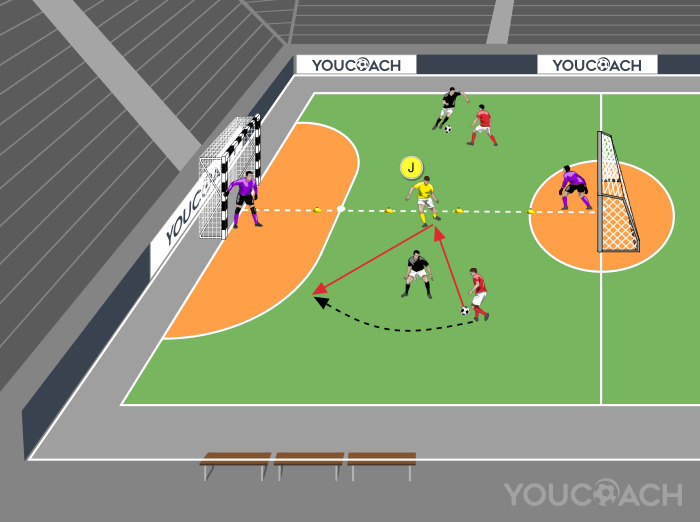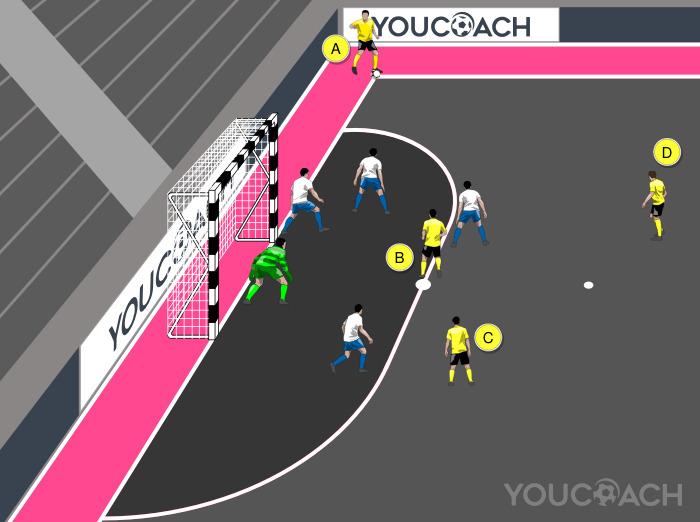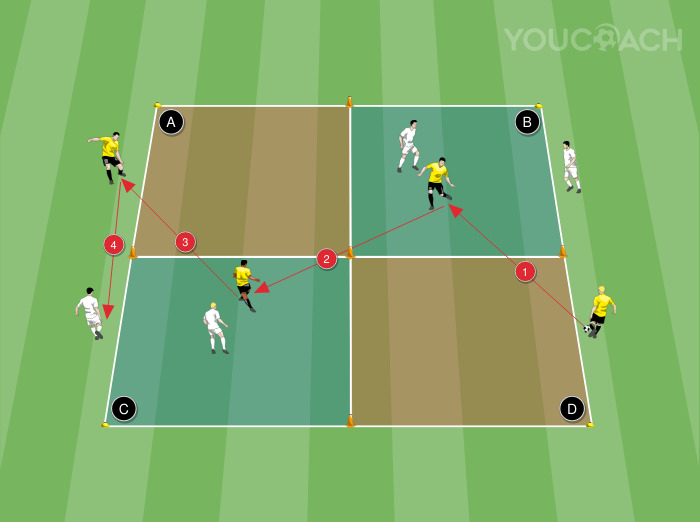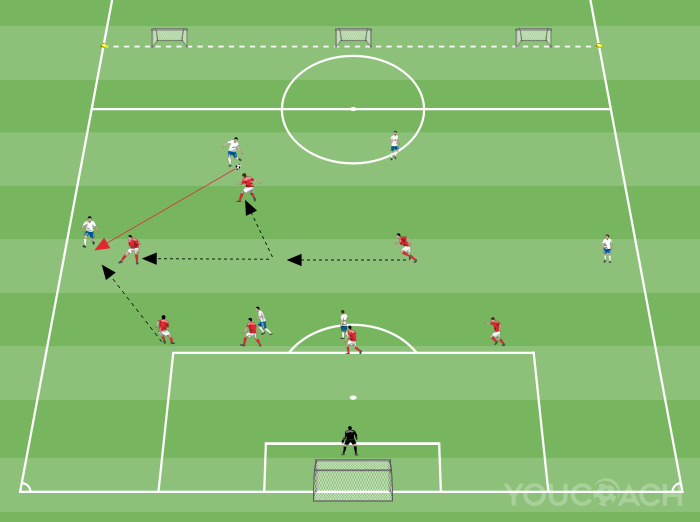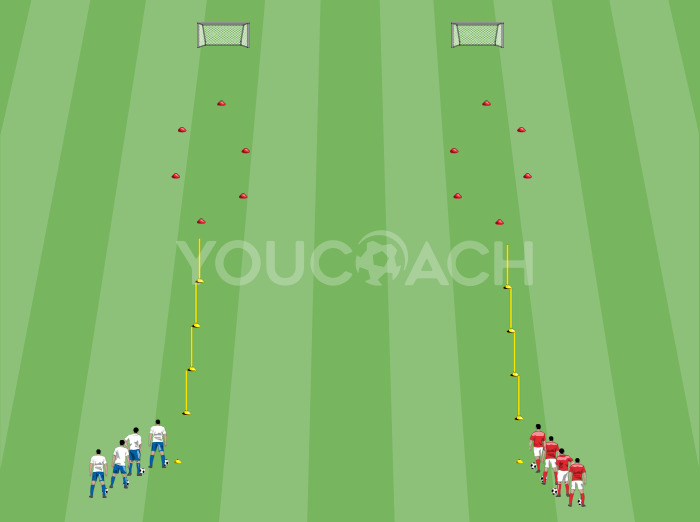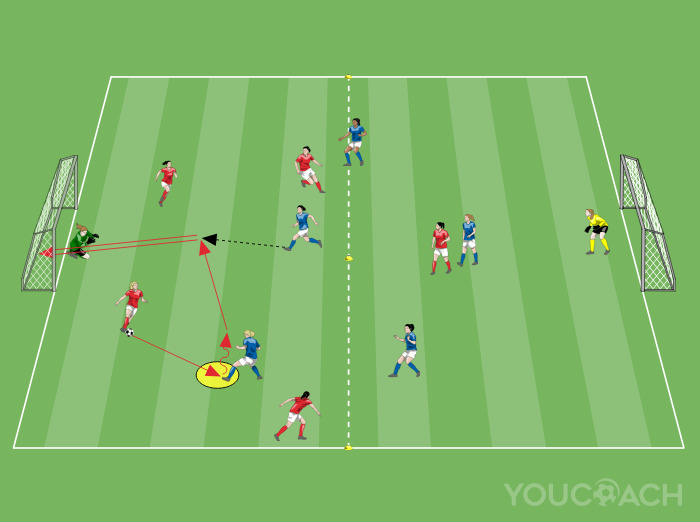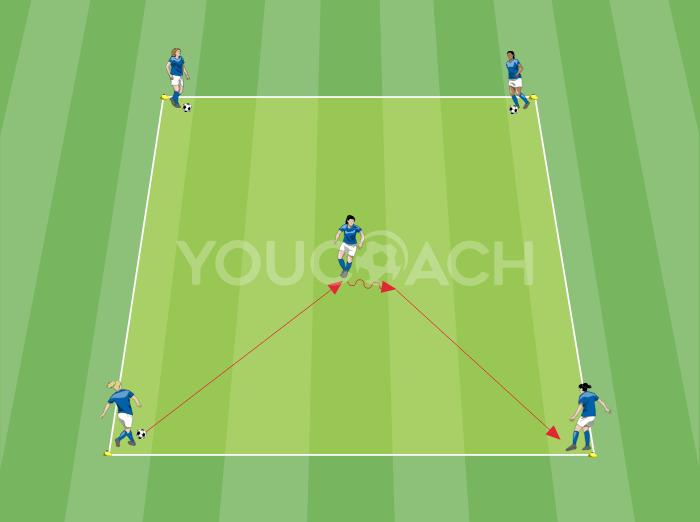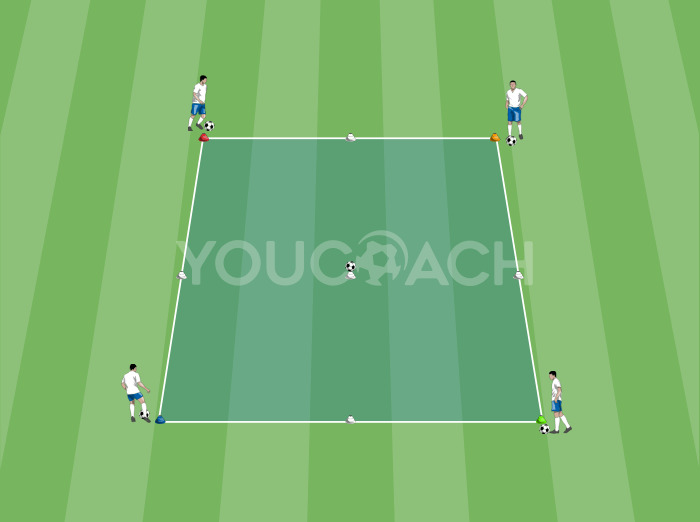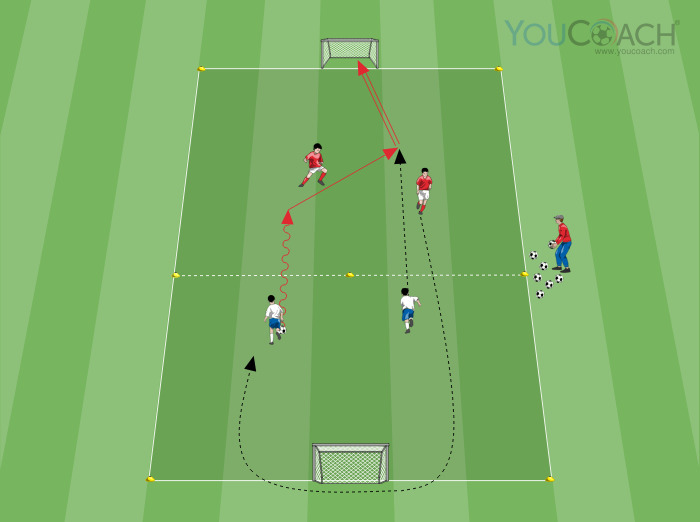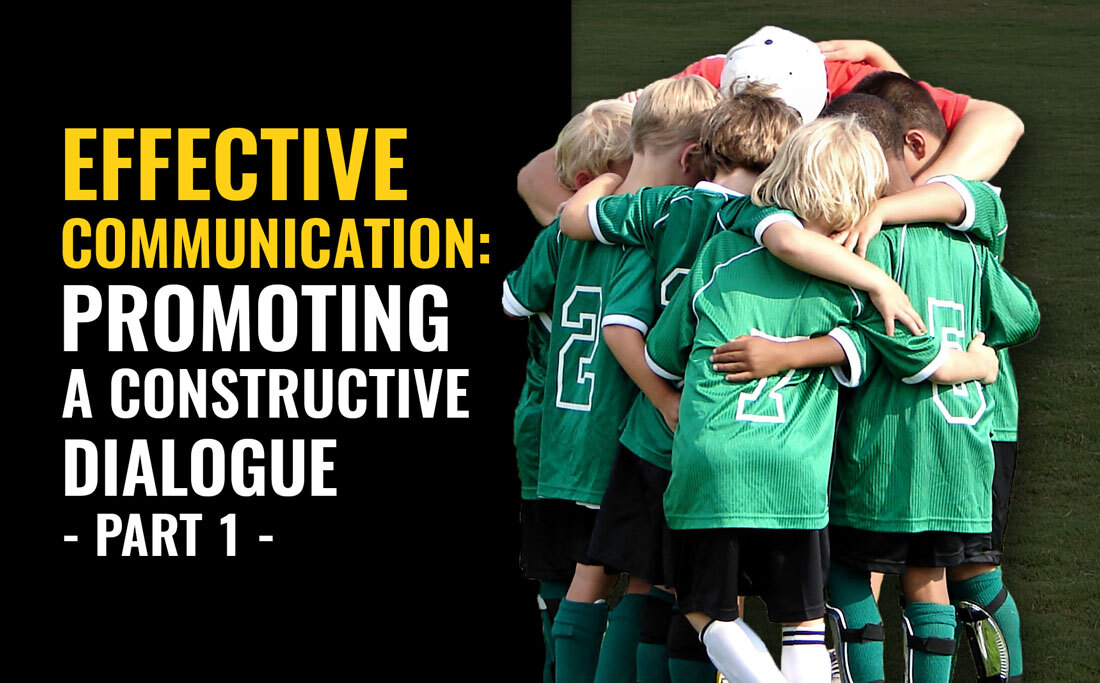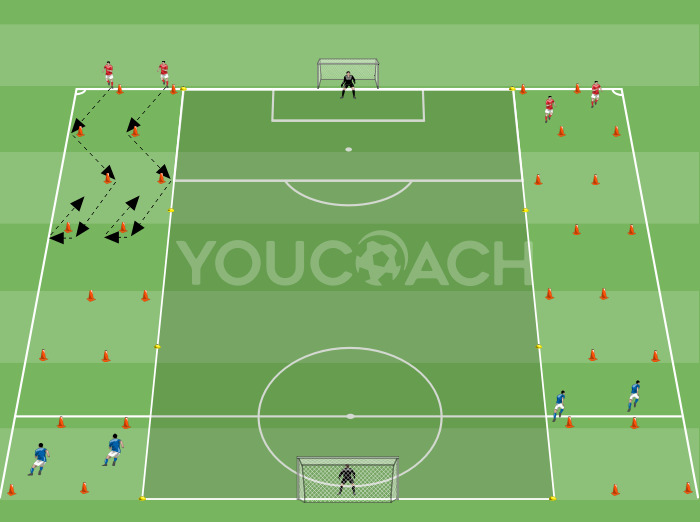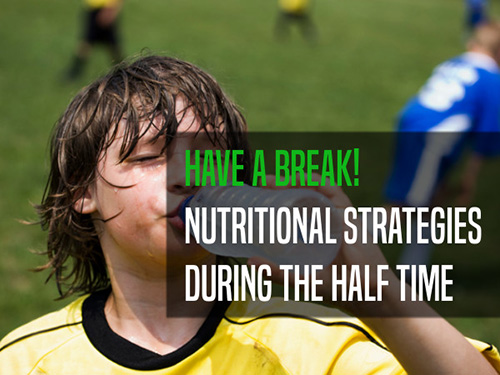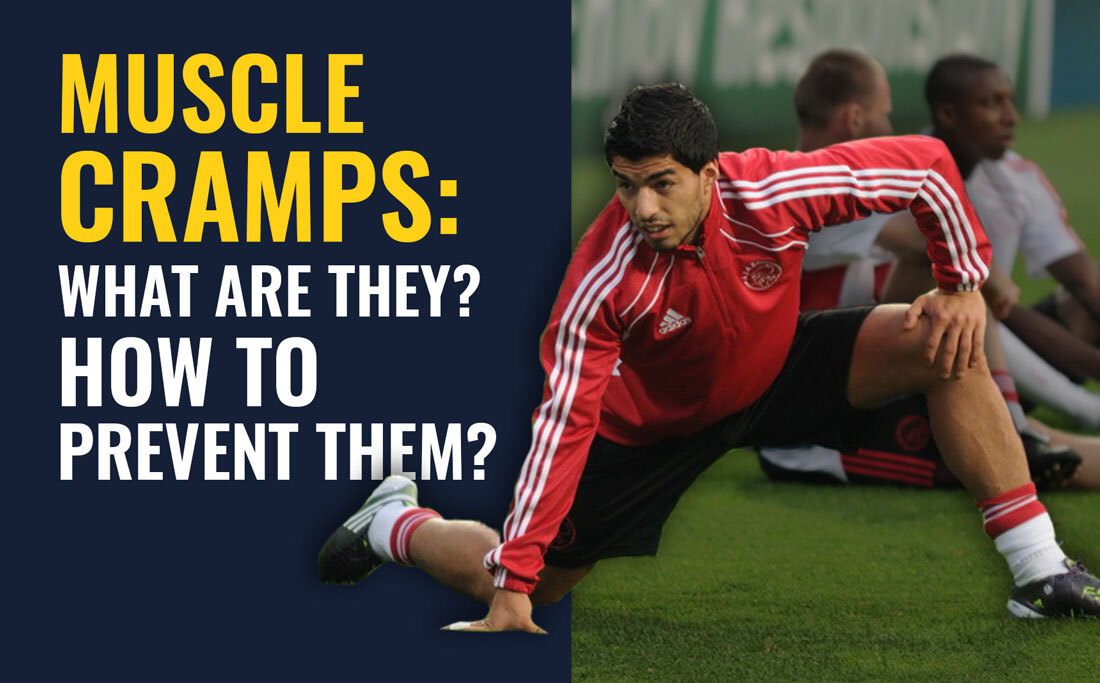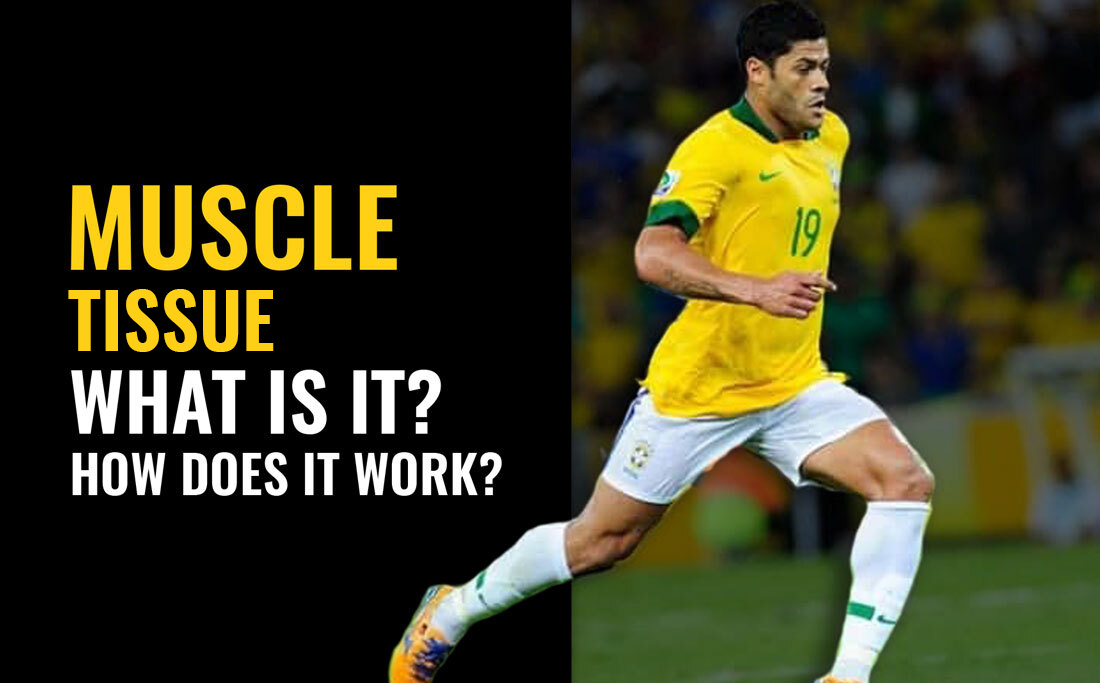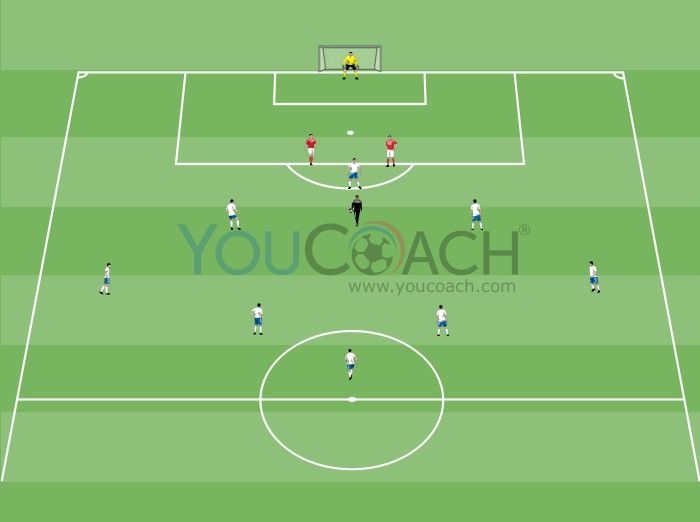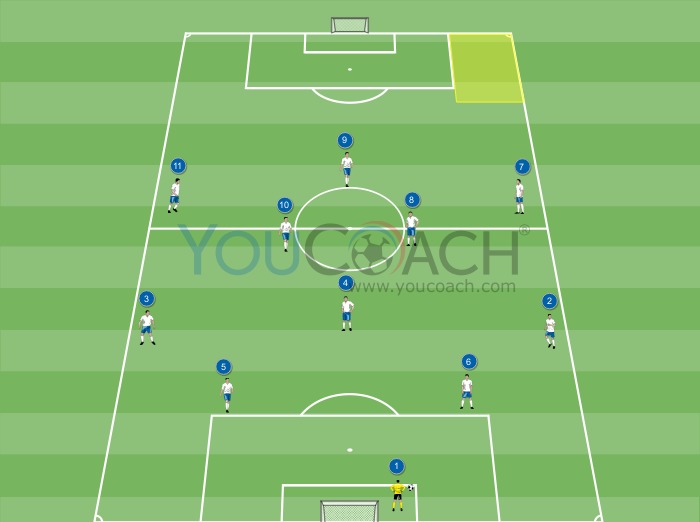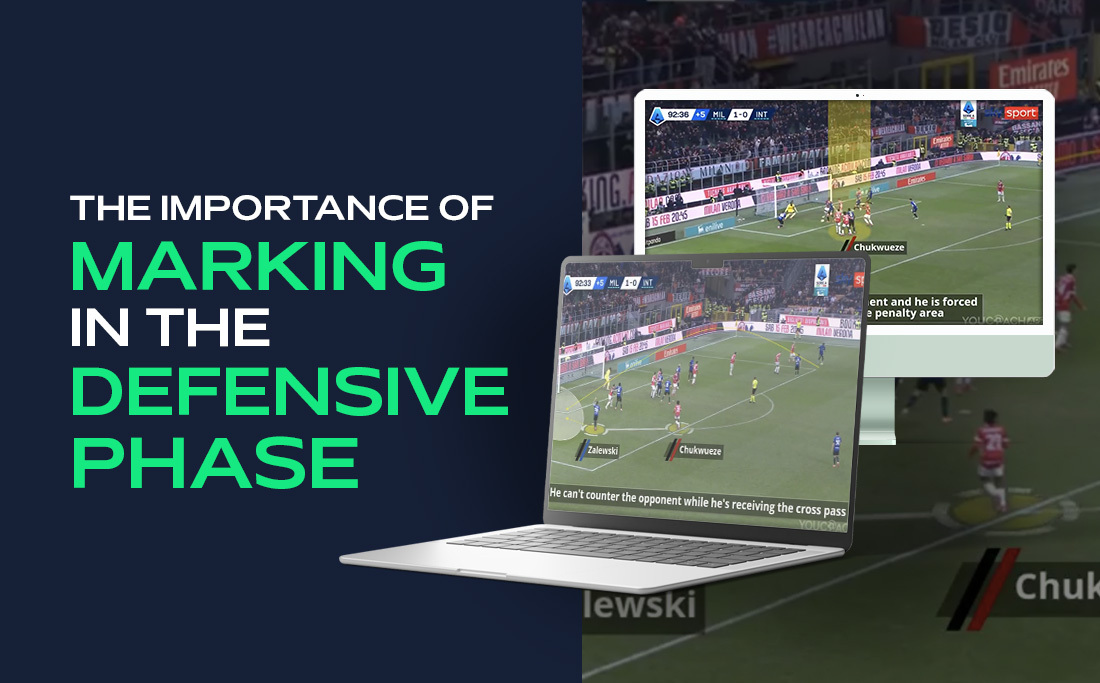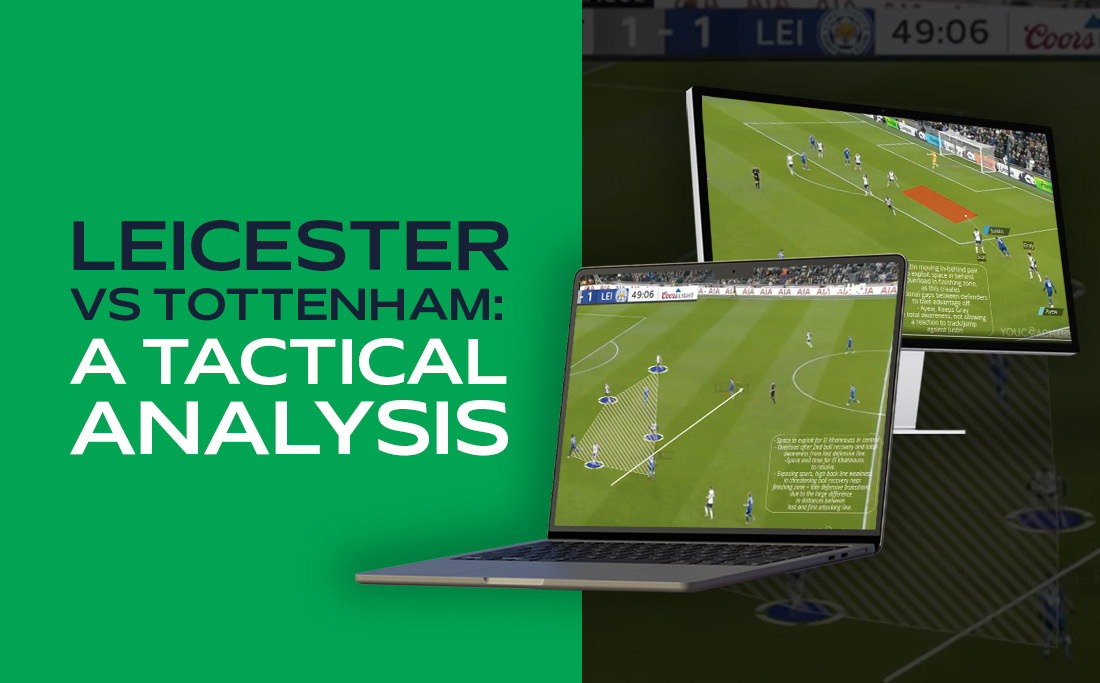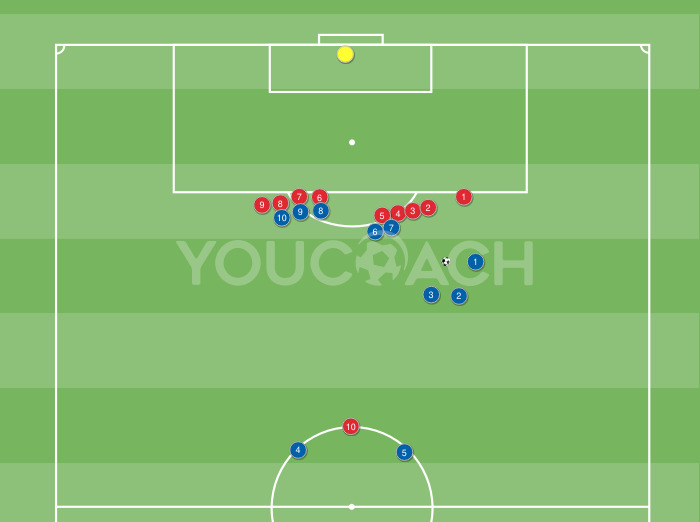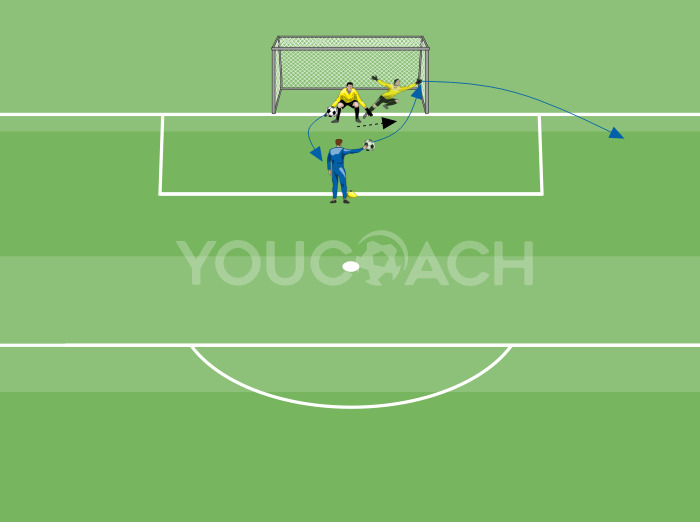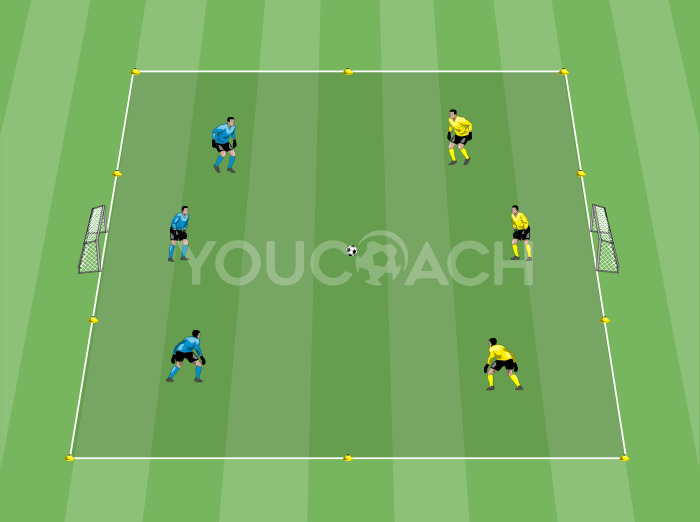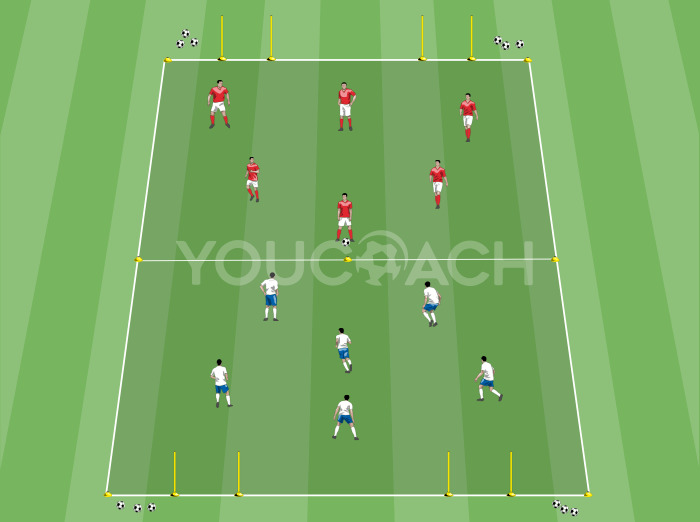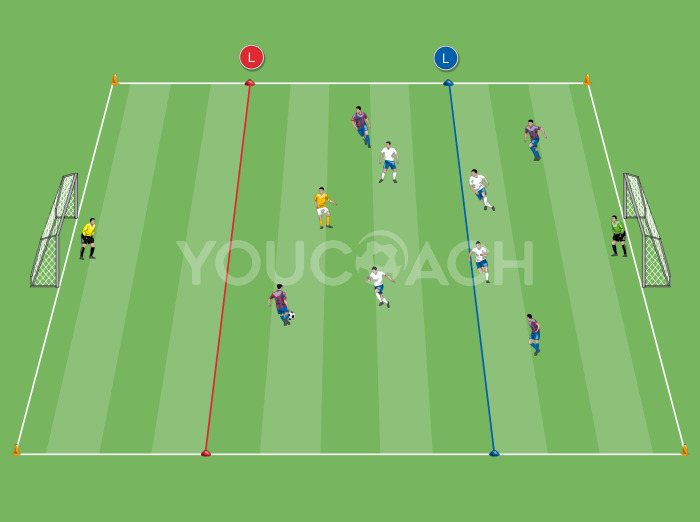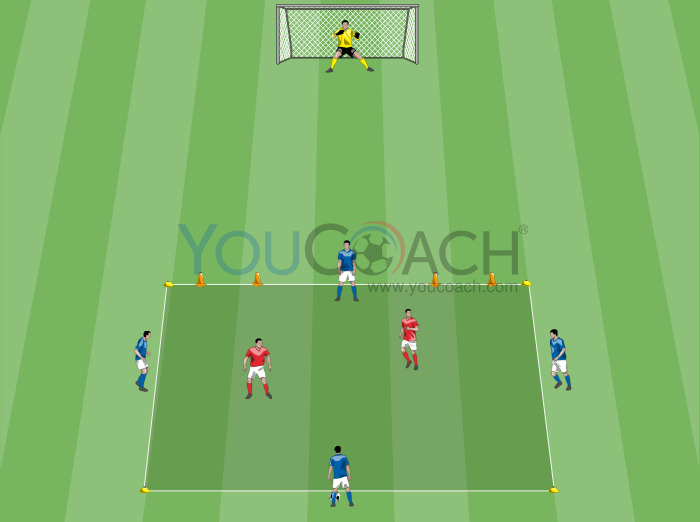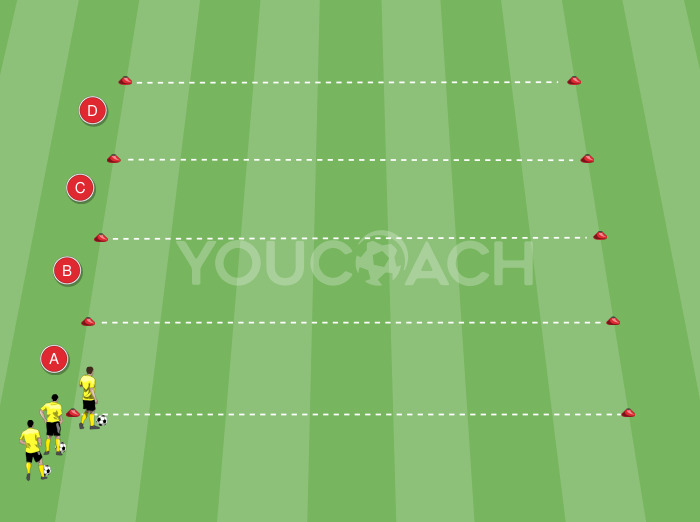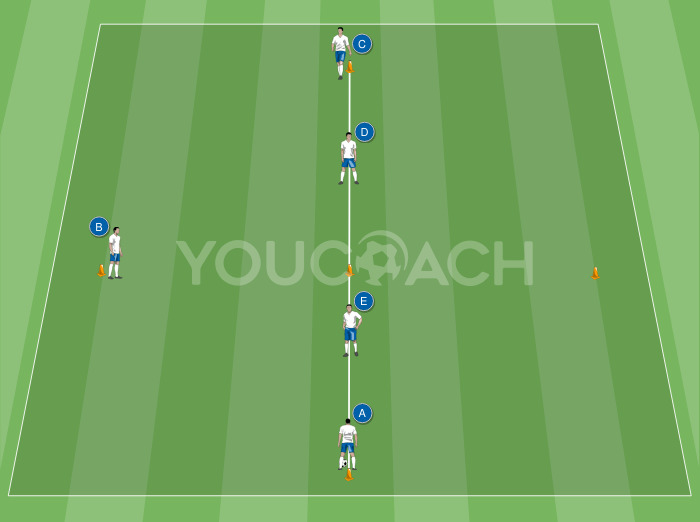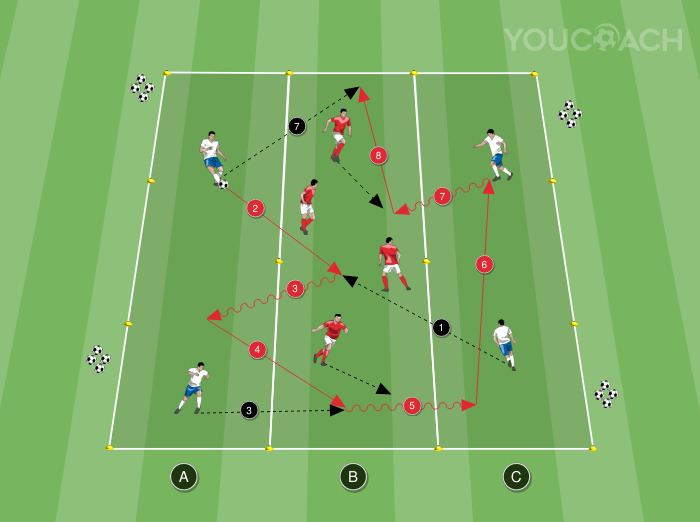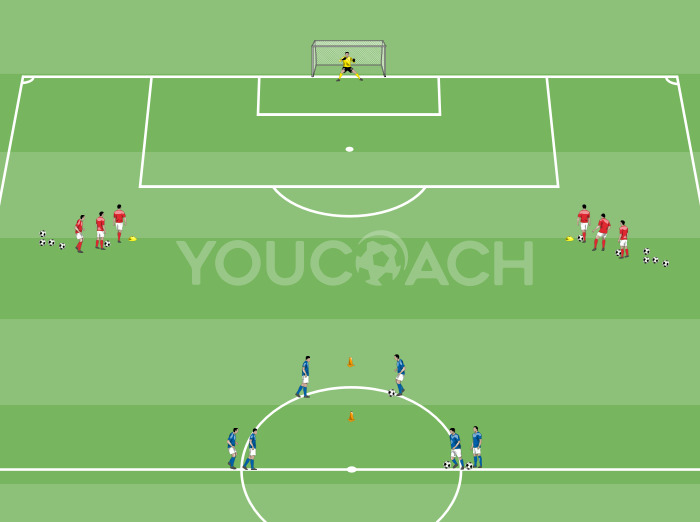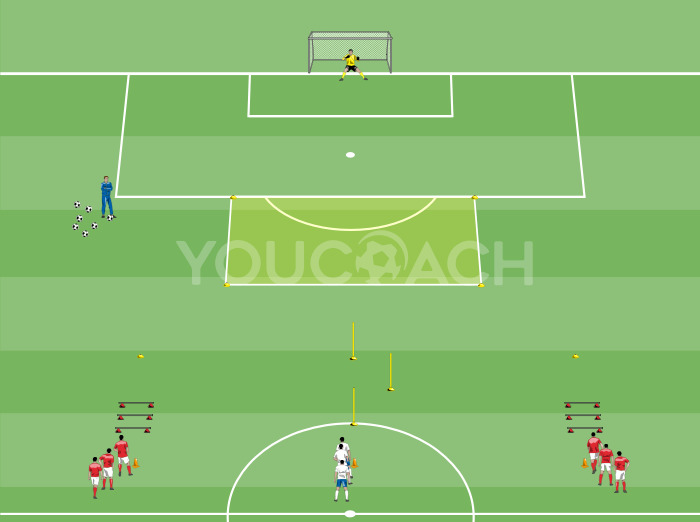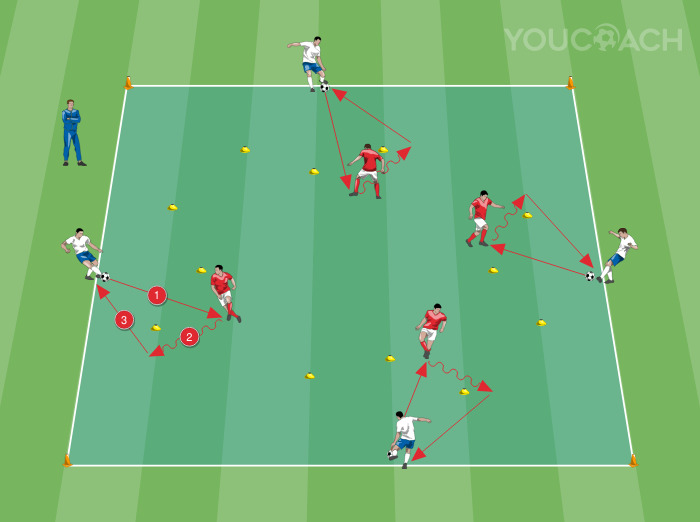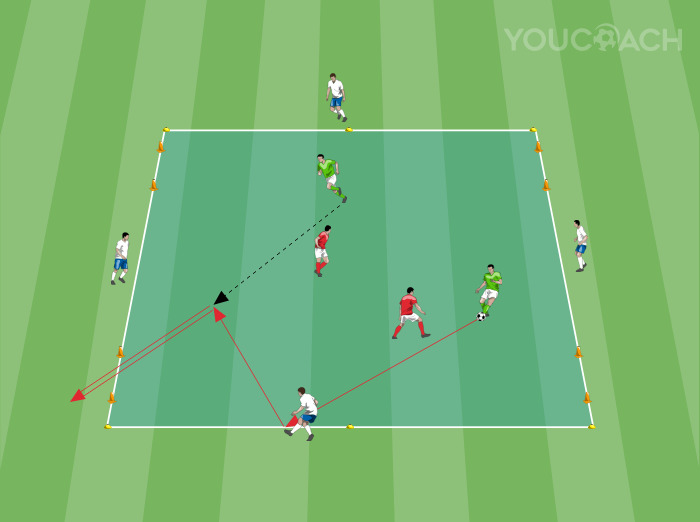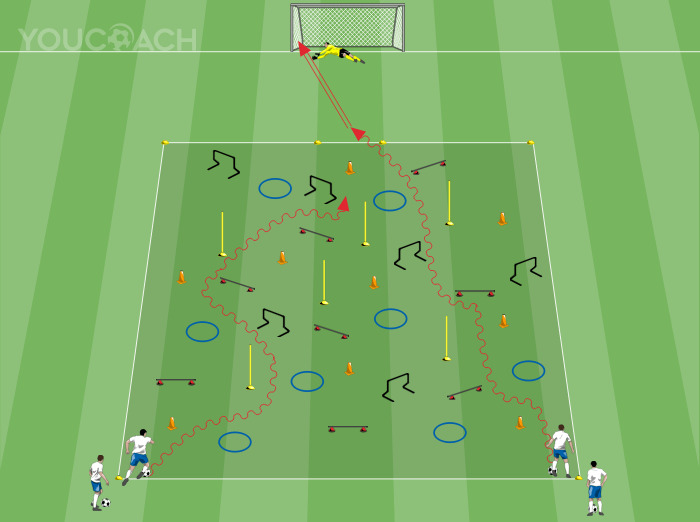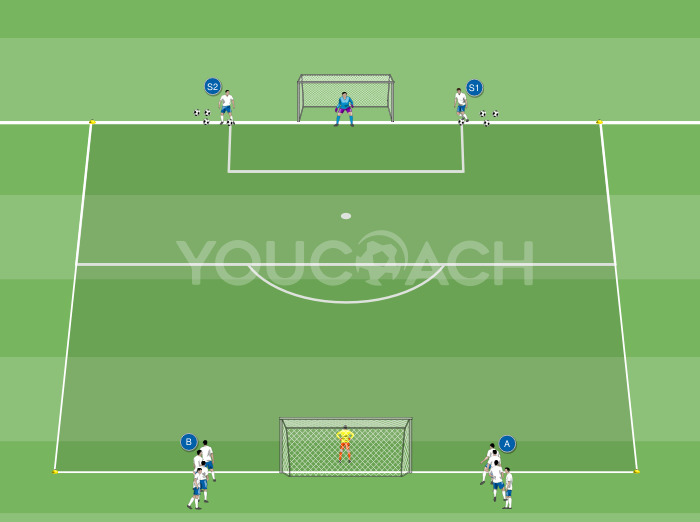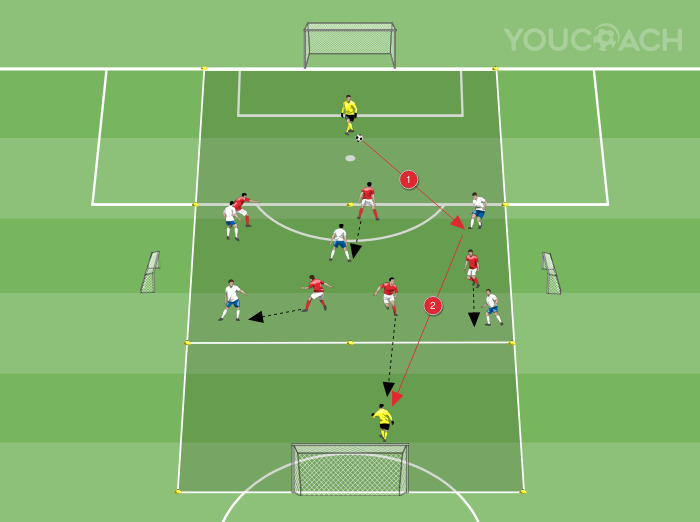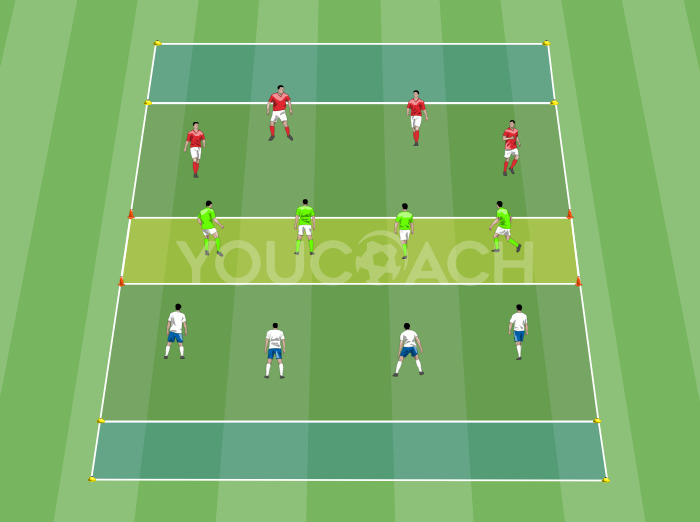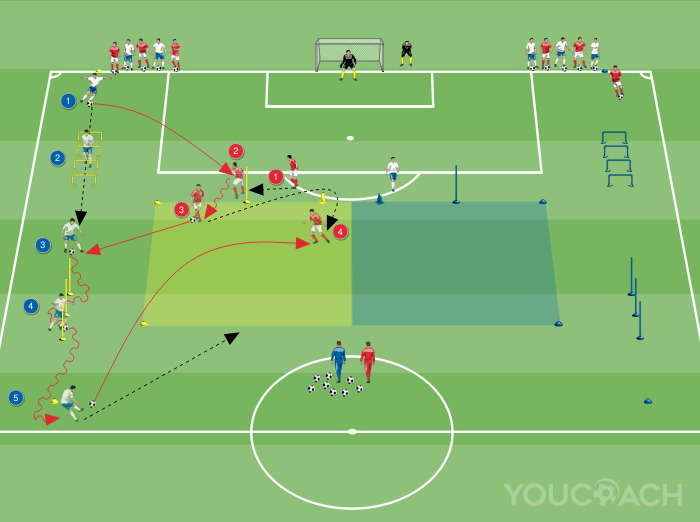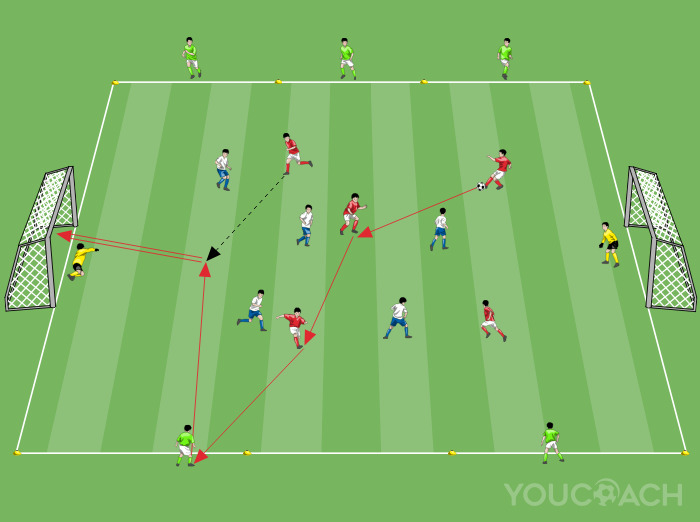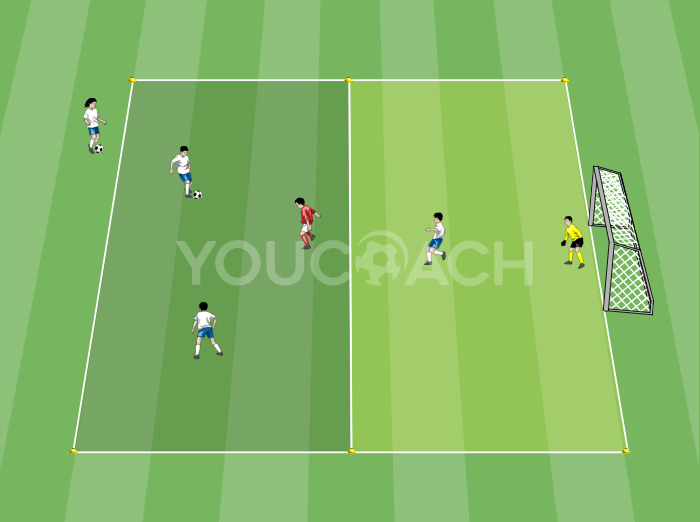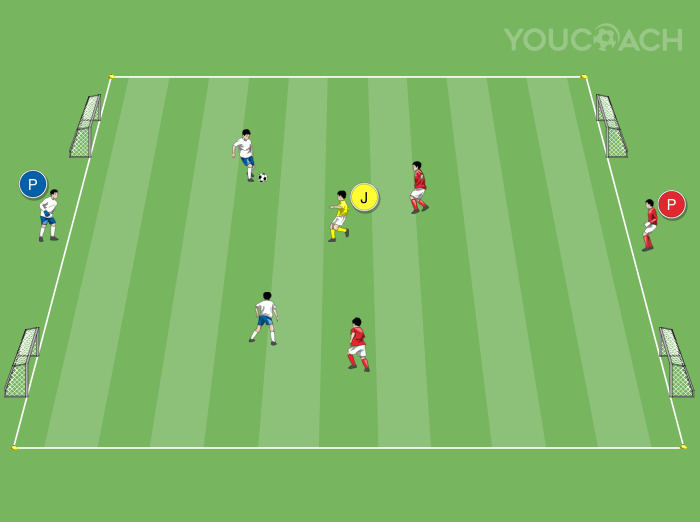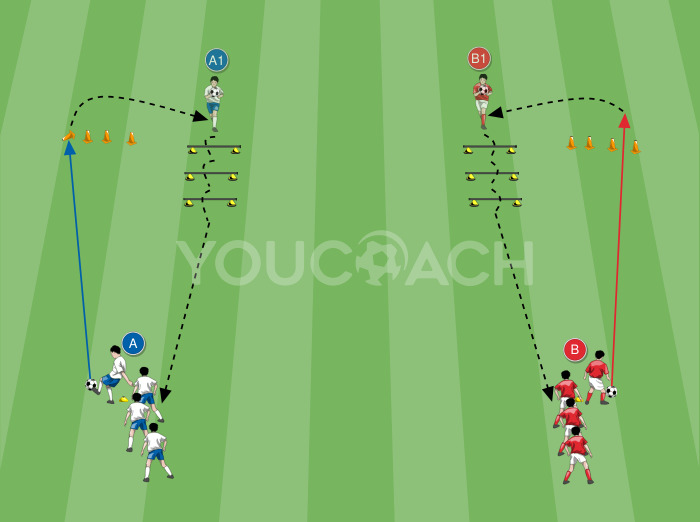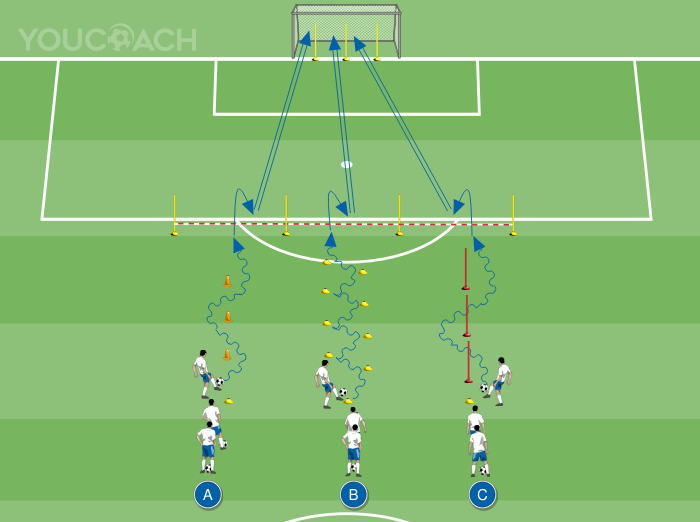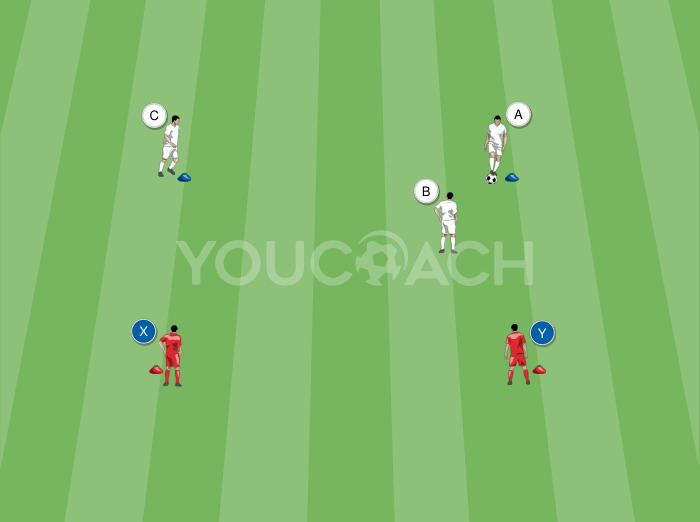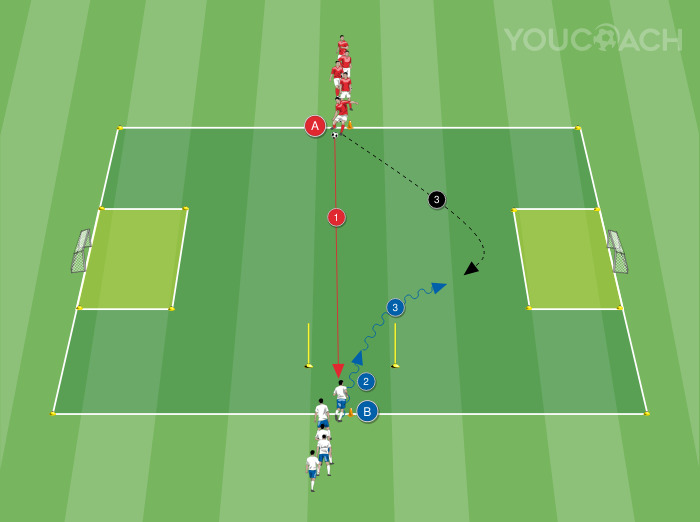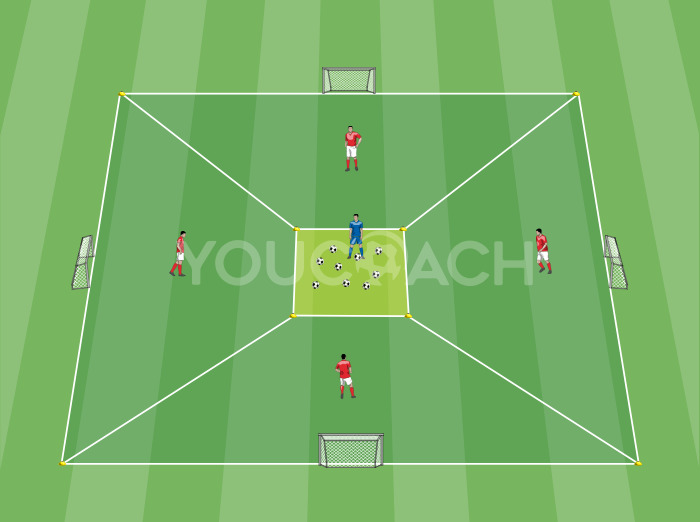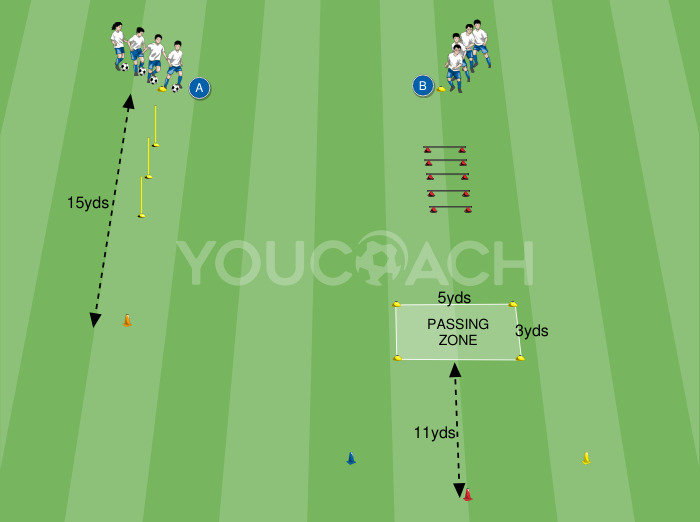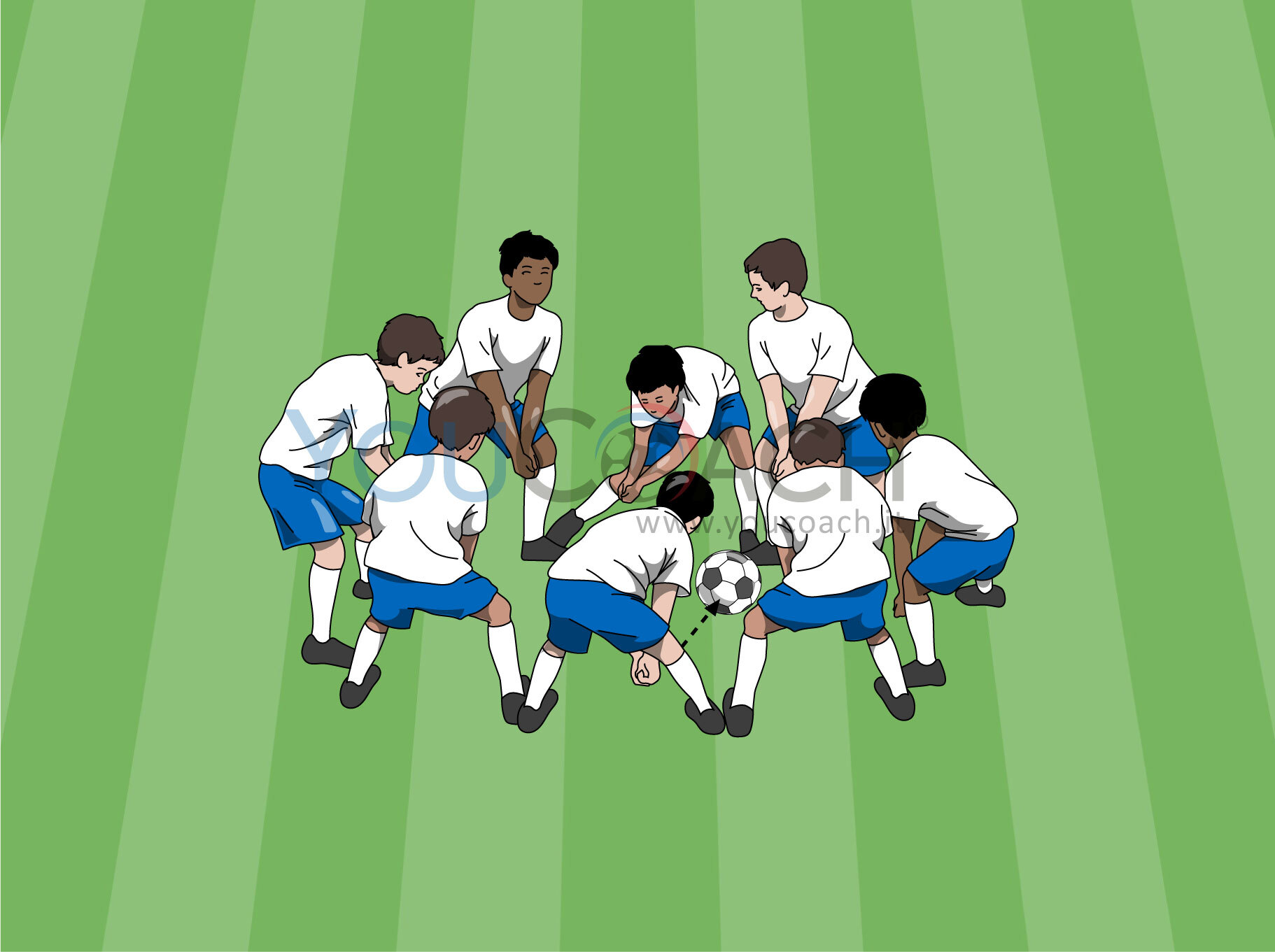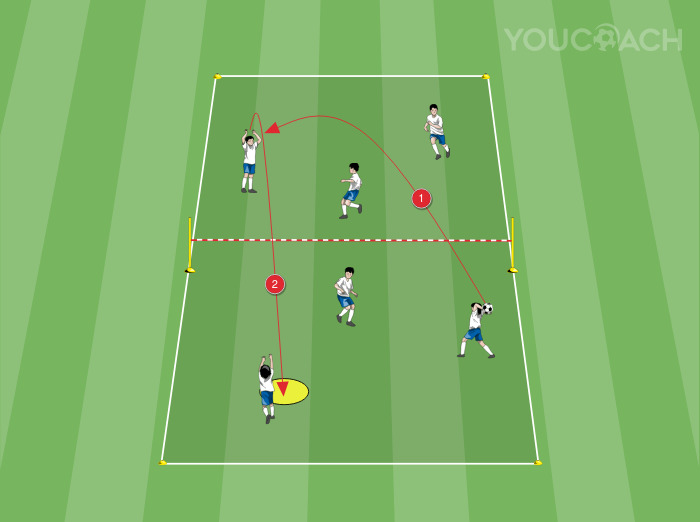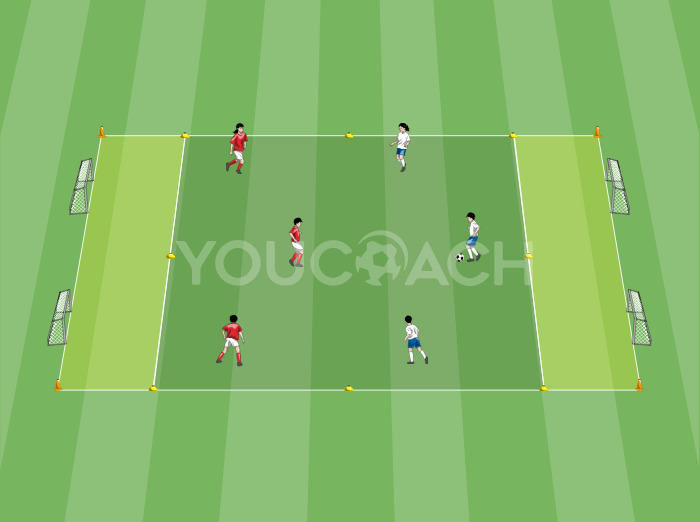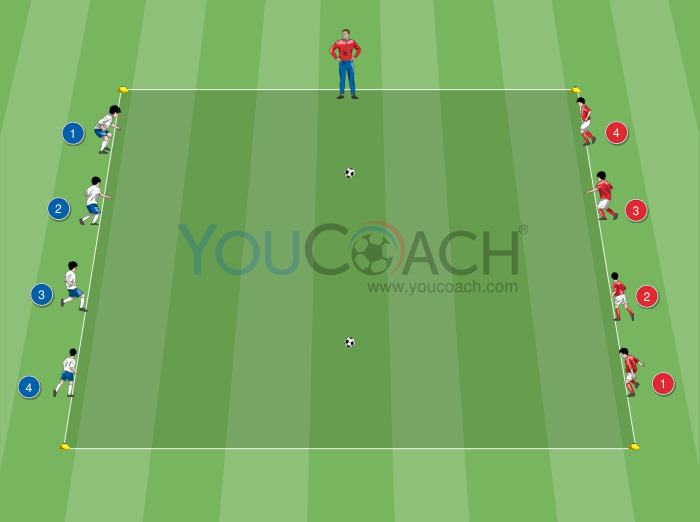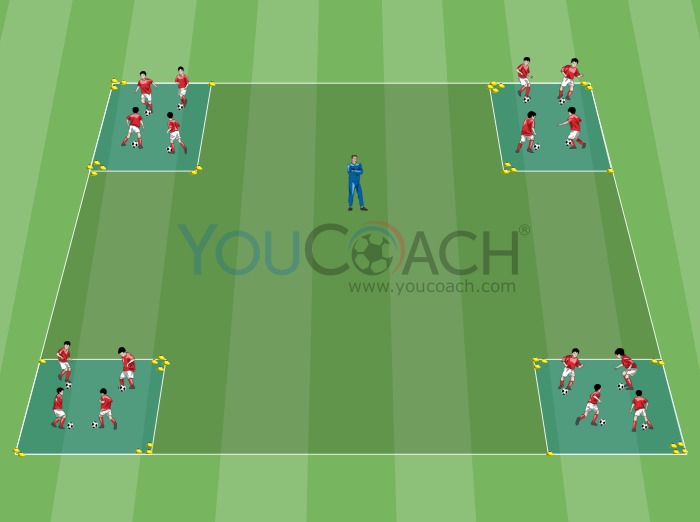Small-sided game 4 v 4 + 2 support players for finishing
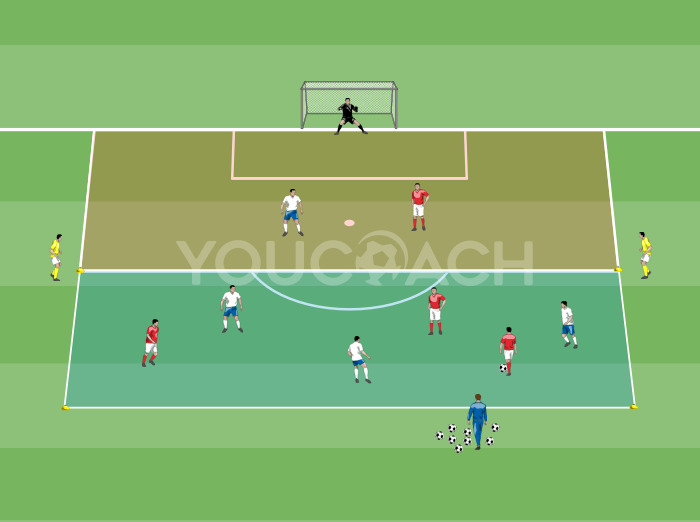
- 6 vests (4 of one color, 2 of another one)
- Markers
- 1 goal
- Balls
- Playing Area: 40x30 meters / 44x33 yds
- Players: 10 + 1 goalkeeper
- Duration: 20 minutes
- Series: 5 of 3 minutes each with 1 minute of recovery between sets
| Summary | Secondary Objectives |
|---|---|
|
Small-sided game 4 v 4 plus 2 outside flank players, focusing on ball possession in width and finishing on goal |
Creating space, Support, Width, Depth, Finishing in the final third, Mark, Press, 3v3, Passing, Receiving, Dribbling, Shooting, Receiving to turn, Intercepting, Pass, First touch, Oriented control, Feints and tricks, Losing your marker, Finishing, Marking, Intercepting, Creating width and depth, 3 versus 3, Possession triangles, Ball possession, Attack the goal, Wall Pass, Bouncer, Insertion, Pressure |
Use markers to create a 40x30-meter/44x33-yard playing field divided into two horizontal zones. The first zone is the penalty area (red zone), while the second one, furthest from the goal, measures 40x15 meters/44x16 yards (blue zone). Divide the players into two teams of four (white team against red team in the picture). For both teams, three players are positioned inside the blue zone while the fourth player is positioned in the red zone. A support player is positioned on each side of the field (yellow players in the picture). The goalkeeper defends the goal. The coach stands outside the field with a good supply of balls.
- The drill always begins with a 3 v 3 possession in the blue zone, which involves, after a set number of passes (e.g. four), looking for one of the outside support players (yellow players)
- When the ball reaches an outside player, the drill becomes a 6 v 4 (four attackers + two supports against four defenders)
- When the ball is passed to the outside (flank player), the two players in the penalty area (red zone) become active. The player on the team developing the attack can receive to try for a shot on goal, while the opponent must mark him and prevent the shooting. Players in the blue zone can also participate in the play by occupying the penalty area
- The support players can play outside the field of play and not be attacked (in this case, they can make a cross or a support play) or enter the field and actively participate in the game
- Once the action is over, the game restarts with a new 3v3 possession in the blue zone, with the team that defended in the previous action now in possession of the ball
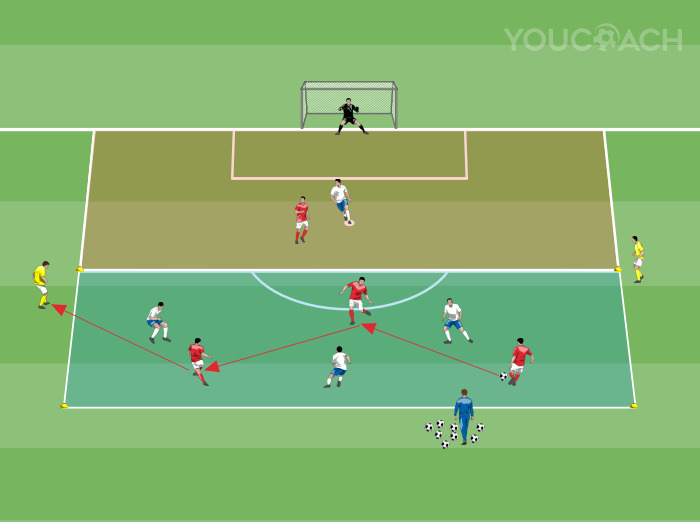
- The 6 v 4 situation always starts after the passes have been made in the blue zone in a situation of numerical parity (3 v 3)
- At the end of each series, change the two outer players with another pair of players (one from the red team and one from the white team)
- Rotate the pair of players (attackers) stationed inside the penalty area with two players playing in the 3 v 3 possession zone at the end of each series
- Play the ball to the outside support player and a third player overlaps towards them. The outside player who has been “overlapped” must pass the ball to another teammate inside the field; he cannot pass directly to the player who is moving behind him
- Encourage players to lose the marker and continuously create multiple passing lanes. In a situation where the teams are evenly matched, it is important not to have two players marked by the same defender. It is therefore important to widen the passing lanes
- Encourage 1 v 1 situations and dribbling. In a situation of numerical balance, it is also important to have players who can beat their opponents
- Encourage the flanks to make their first ball control inside the field, so as to leave space for overlapping
- For defenders, in a situation of numerical balance, not losing your opponent is crucial to prevent possession
- Attack the goal by occupying as many points as possible where the ball will fall in the finishing zone


